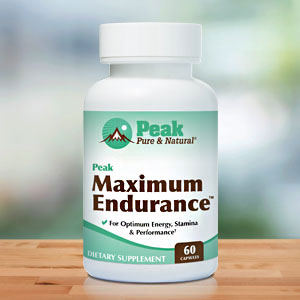Get Easy Health Digest™ in your inbox and don’t miss a thing when you subscribe today. Plus, get the free bonus report, Mother Nature’s Tips, Tricks and Remedies for Cholesterol, Blood Pressure & Blood Sugar as my way of saying welcome to the community!
Got a muscle injury that needs healing fast? Avoid this

As we get older, it seems like the number of aches and pains we suffer go up, along with the time it takes to heal from even small injuries and daily wear and tear.
And according to a study from a team of scientists at Tokyo Metropolitan University, what you eat could be making the situation worse.
That’s because they’ve found that a common dietary staple can actually slow down muscle repair, leaving you in pain and your muscles weak and prone to further injury.
The sugar connection
So what’s the diet staple that has the power to block the healing process in your muscles?
Sugar!
Yup, good old glucose.
And it came as a surprise to even the Japanese scientists.
You see, conventional wisdom says that the cells in our bodies fare better when there is more sugar to fuel their activities. In other words, we need glucose for our cells to grow and proliferate.
However, it turns out that when it comes to your muscles, things aren’t so cut and dry.
Satellite cells and their impact on muscle repair
That’s because of cells found in skeletal muscle known as satellite cells.
The researchers discovered that these satellite cells are responsible for healing that daily wear and tear you experience — a process that takes place continually to keep our muscles in tip-top shape.
The cells themselves actually sit smack in the middle of two layers of sheathing that wrap around what’s called “myofiber cells” of each of your individual muscle fibers. And when damage occurs to the myofiber cells, the satellite cells kick into gear, spinning off more cells and fusing onto the myofibers — much like a bandage.
This process not only repairs the damage that’s been done to your muscles, it also prevents a loss of muscle mass.
But that process can go wrong in the presence of too much sugar.
In fact, after examining the growth of satellite cells in petri dishes, the researchers found that higher glucose levels equal slower growth.
That’s right — sugar keeps your muscles from repairing themselves.
In fact, the researchers found that a low glucose environment was just what the “doctor ordered” to stimulate muscle repair. Those same petri dish experiments showed that lower levels of blood sugar leads to an increased number of satellite cells with a greater ability to multiply, fuse to myofibers and heal your muscles.
Keeping your muscles strong for life
So if you want to have strong muscles that are capable of repairing both your daily wear and tear and any injuries that should occur, it looks like limiting sugar is a must.
Additionally, be sure to feed your muscles by increasing your per meal protein intake and take muscle-supporting supplements.
Some that have proven effective at encouraging muscle health include:
Resveratrol, which can help encourage muscle growth even under diabetic conditions;
Omega-3s, which have been shown to protect muscle mass even in the face of immobilization;
Vitamin D, which can help our muscles stay strong, healthy and functional with age.
Editor’s note: Are you feeling unusually tired? You may think this is normal aging, but the problem could be your master hormone. When it’s not working, your risk of age-related diseases skyrockets. To reset what many call “the trigger for all disease” and live better, longer, click here to discover The Insulin Factor: How to Repair Your Body’s Master Controller and Conquer Chronic Disease!
Sources:
Less sugar, please! New studies show low glucose levels might assist muscle repair – EurekAlert!














